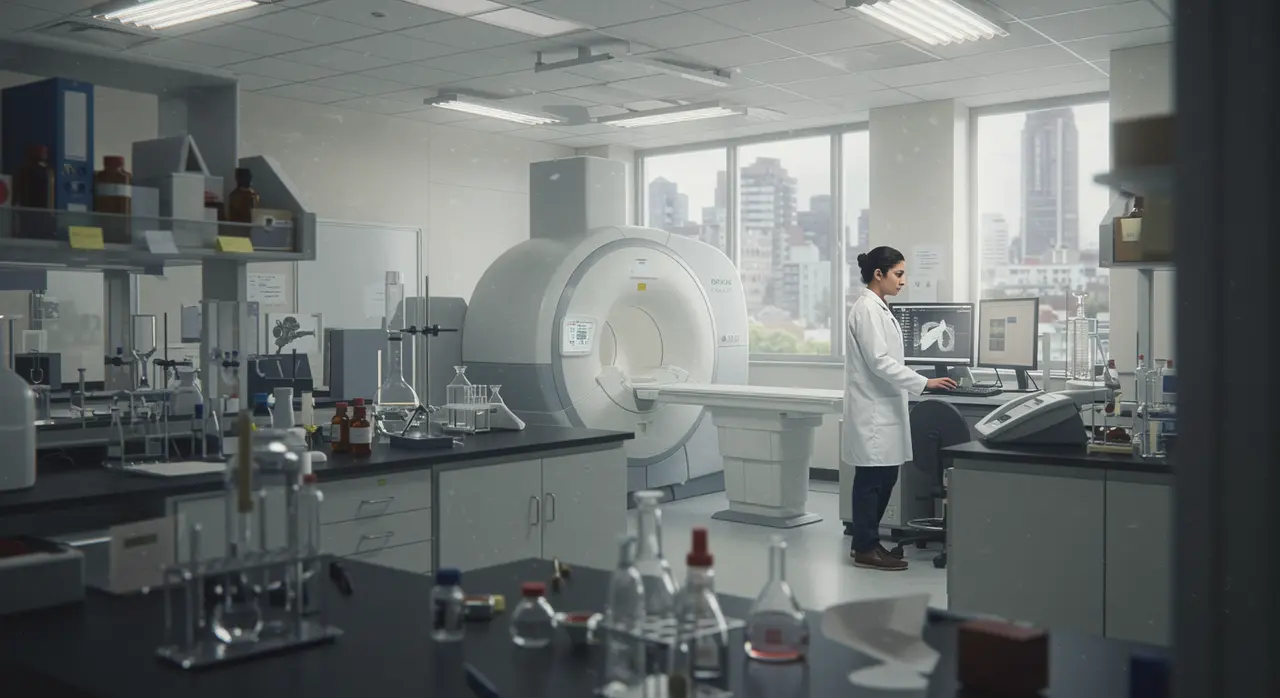University of New Mexico Study Links MRI Contrast Agent Gadolinium to Long-Term Health Risks
222 views
A University of New Mexico study has uncovered troubling evidence that gadolinium, a rare earth metal widely used in MRI contrast agents, may linger in the human body long after its intended purpose, forming harmful nanoparticles that could pose serious health risks. The findings, which connect gadolinium retention to conditions such as nephrogenic systemic fibrosis (NSF), raise questions about the long-term safety of one of modern medicine’s most relied-upon diagnostic tools. Researchers are now calling for a deeper investigation into how this metal interacts with the human body, particularly in vulnerable populations.

The Hidden Legacy of Gadolinium: Health Risks Lurking Beneath the Surface
For decades, gadolinium-based contrast agents (GBCAs) have been a cornerstone of magnetic resonance imaging (MRI), offering unparalleled clarity in visualizing internal organs, blood vessels, and tissues. Yet, this breakthrough in diagnostic imaging has come with a shadowy counterpart: the potential for gadolinium to remain in the body, where it may form toxic compounds that infiltrate vital organs. The University of New Mexico study sheds light on how this process occurs, with oxalic acid—naturally present in foods like spinach and linked to vitamin C metabolism—playing a surprising role in the creation of nanoparticles that could exacerbate disease.
The researchers discovered that when gadolinium binds with oxalic acid, it forms particles capable of embedding themselves in organs such as the liver, kidneys, and brain. These particles may amplify disease signals in certain individuals, particularly those with preexisting conditions like impaired kidney function. NSF, a rare but devastating disorder linked to gadolinium retention, manifests in symptoms such as skin thickening, joint pain, and even organ hardening. While the condition is most commonly associated with patients suffering from kidney disease, the study’s findings suggest that even a single exposure to GBCAs could leave lasting traces of gadolinium in the body.
What’s particularly alarming is the revelation that nearly half of the patients found to have gadolinium particles in their systems had undergone only one MRI scan involving contrast agents. This points to the possibility that individual metabolic or genetic factors may play a significant role in determining how the body processes and retains the metal. In some cases, these factors may amplify the toxic effects, creating a hidden health hazard that remains unaddressed in current medical protocols.
The implications of this research extend far beyond NSF. The presence of gadolinium nanoparticles in the body raises broader concerns about the potential for long-term harm, particularly as the use of MRIs continues to grow. While the medical community has long considered GBCAs to be safe for most patients, the study underscores the need for a more nuanced understanding of how these agents interact with the body over time.
The research team is now developing an international patient registry to track individuals who may be at risk of gadolinium-related complications. By analyzing biological samples for evidence of gadolinium accumulation, the registry aims to identify patterns that could inform safer medical practices and targeted interventions. This global effort represents a critical step toward addressing the gaps in knowledge surrounding gadolinium’s impact on human health.
Beyond the immediate findings, the study raises pressing questions about the ethics and oversight of medical technologies that, while transformative, may carry hidden risks. Should patients be routinely informed about the potential for gadolinium retention before undergoing contrast-enhanced MRIs? Are there alternative imaging techniques that could reduce reliance on GBCAs without compromising diagnostic accuracy? And how can the medical community strike a balance between the undeniable benefits of MRIs and the emerging evidence of their potential downsides?
The answers to these questions will likely require a collaborative effort across disciplines, from radiology and toxicology to pharmacology and patient advocacy. In the meantime, the findings serve as a stark reminder that even the most advanced medical technologies are not without their flaws. As researchers continue to unravel the complexities of gadolinium’s interactions within the human body, the hope is that their work will pave the way for safer diagnostic practices that minimize harm while maximizing the benefits of modern medicine.
In reflecting on these developments, one cannot help but consider the broader implications for how society approaches innovation in healthcare. The story of gadolinium is, in many ways, a microcosm of the challenges inherent in balancing progress with precaution. It serves as a cautionary tale, urging us to look beyond the immediate advantages of new technologies and to consider their long-term impact on human health. As science advances, so too must our capacity for critical evaluation, ensuring that the pursuit of better outcomes does not come at the expense of patient safety.
